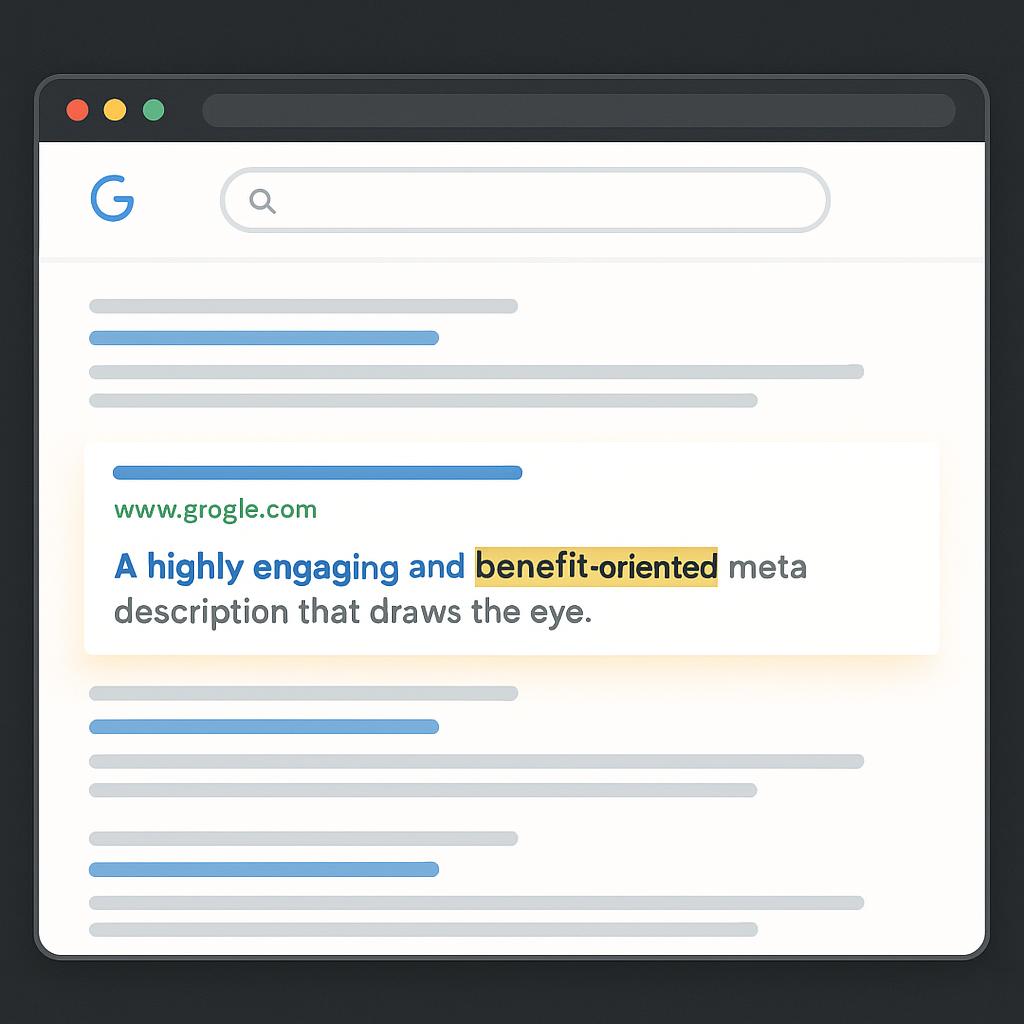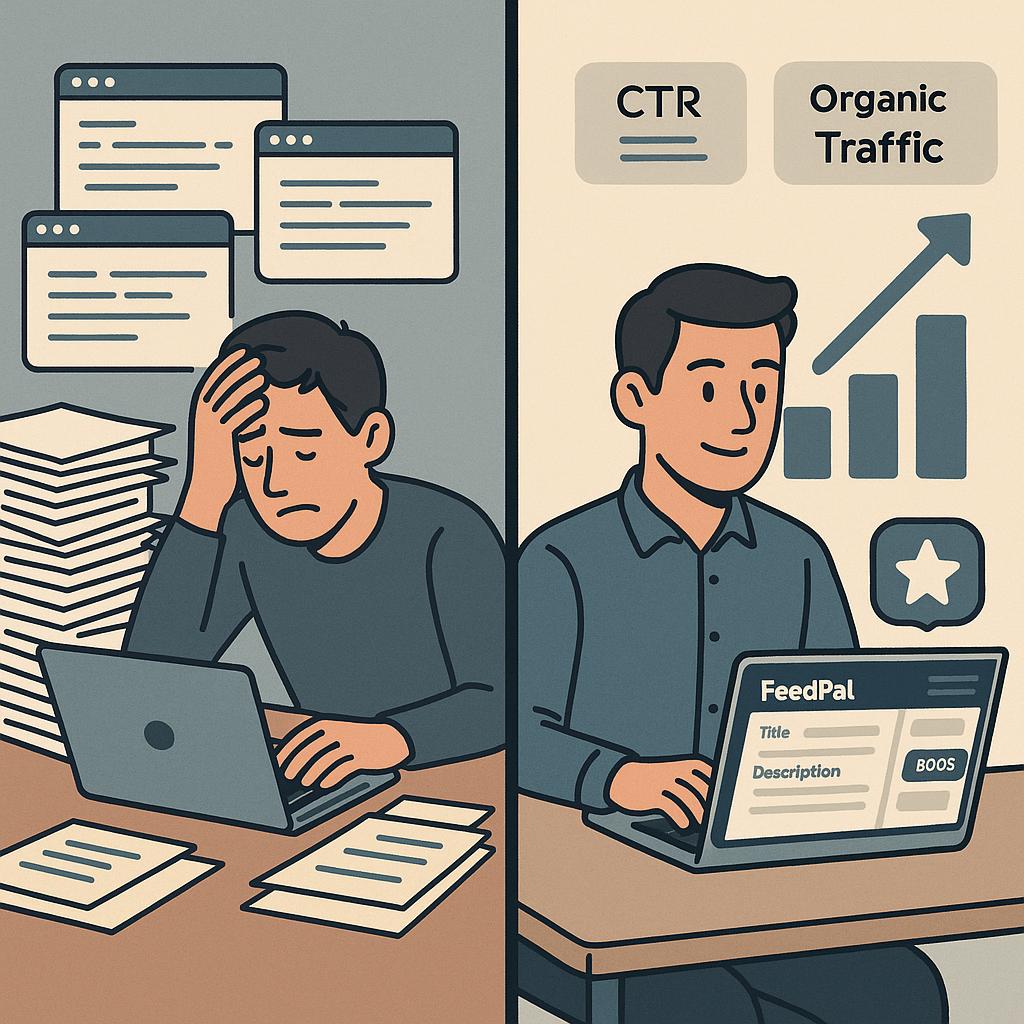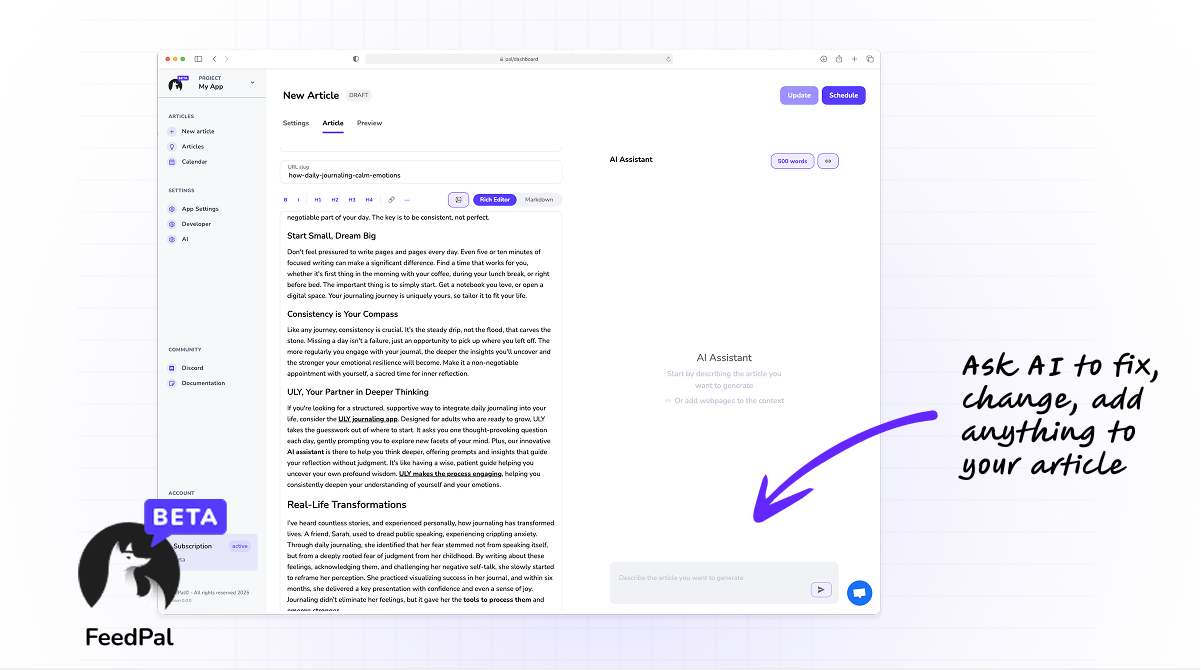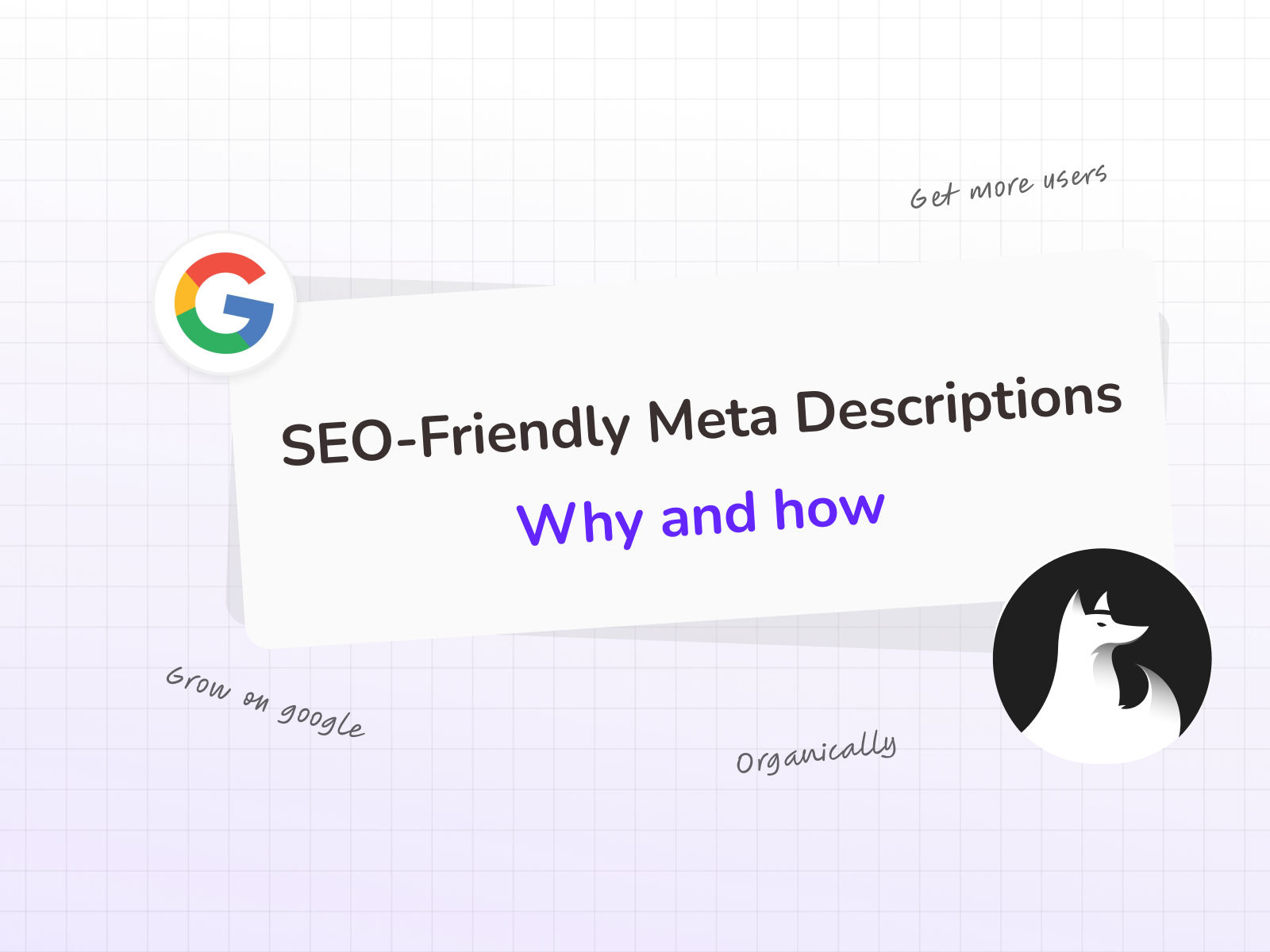As a founder, indie maker, or startup entrepreneur, you're constantly on the hunt for ways to boost your online visibility and attract more organic traffic.
You know content is king.
How do you make sure folks actually click through when it pops up in search results? The answer often lies in a tiny, but incredibly mighty, element: the meta description.
The meta description becomes your window display, that brief, tantalizing summary, just enough to coax passersby to step right in.
Without a compelling display, even the most brilliant products might just sit there, gathering dust.
Let's dig into how you can truly nail this pivotal part of SEO to drive clicks and grow your lean business.
What Exactly is a Meta Description and Why Should You Care?
So, what exactly is this?
A meta description is a little text, usually around 160 characters, that pops up right below your page title in search engine results pages, or SERPs.
Think of it as your quick elevator pitch to folks who might visit, right there on Google.
It's your chance to tell people what's inside your page and why they should click on your link instead of a competitor's.
While search engines like Google have stated that meta descriptions aren't a direct ranking factor for SEO. It still really important. That's the first thing people will see on google or while sharing your link on social media.
But it also have an impact on your site ranking.
And why's that? Because they massively influence your click through rate (CTR). A higher CTR signals to search engines that your content hits the mark and provides serious value to users. This subtle nod can really boost your overall search performance and visibility over time.
It's not about directly improving the ranks based on the description itself. Instead, it's about suggesting users to pick your result, which then sends good vibes back to the search engine.

The Direct Impact on Click Through Rate (CTR)
Let's just cut to the chase: a killer meta description is a potent weapon for increasing your CTR. For example, picture this scenario: a user performs a search, and your page appears among many others. That meta description often seals the deal on whether they click your link. It's your golden chance to genuinely pop in a crowded digital landscape.
Put yourself in a user's shoes for a moment. When they see a search result, they do a quick scan of the title, then the description. If your description answers their burning question clearly and irresistibly, shines a spotlight on a benefit, or serves up a solution, they're way more likely to click. For example, if you're a SaaS founder offering a project management tool, a meta description that says, “Streamline your team's workflow, boost productivity, and hit deadlines faster with our intuitive project management software,” blows a generic one out of the water. The pros will tell you: a robust meta description works like a tiny ad, directly swaying a user's choice to dive into your content. A higher CTR signals to search engines that your result is highly relevant to the query, which, in turn, can help your search visibility soar.
Keyword Integration: The Smart Way
When it comes to keywords in your meta descriptions, it's a whole different ballgame compared to old school SEO keyword stuffing. Remember, they're really for people, not just robots. That said, strategically weaving in your primary keywords is still super important. And why's that? Because search engines tend to bold the keywords in your meta description that perfectly match what a user just typed in.
This bolding snaps the user's eye right to it. It's a clear signal your page is spot on with what they're looking for. It helps bridge the gap between what the user wants and what your content offers. For example, if someone searches for “best CRM for startups,” and your meta description includes “Find the best CRM for startups to manage leads and automate sales,” that bolded phrase will instantly jump out at them. The trick is to blend keywords in naturally and with purpose, making sure they boost the message, not muck it up. Prioritize quality and easy reading over just stuffing them in. For more on keyword strategy, consider understanding the importance of longer, more specific keywords for driving niche traffic.
Navigating Character Limits: Be Concise, Be Compelling
Grappling with character limits? That's easily one of the trickiest parts of cooking up killer meta descriptions. While Google’s display limits can swing around, a good rule of thumb is to shoot for roughly 150 to 160 characters on desktop. Just remember, it'll likely be even shorter on mobile. If your description exceeds this, it'll get chopped off, ending with an ellipsis (...).
This means every single character really, truly matters. You've got to cram your core message, some key terms, and a clear call to action into that tiny box. Shove your most crucial info, your unique selling point, and your main keywords right up front. That way, even if the description gets snipped, the user still catches the gist. For example, instead of “This article talks about a lot of different aspects of digital marketing for small businesses and how it can help you grow your brand online,” try “Unlock growth: Learn essential digital marketing strategies for small businesses to boost visibility and sales.” The latter is concise, packed with keywords, and spells out the benefit right away.
Crafting a Powerful Call to Action (CTA)
A meta description is more than just a summary; it's an outright invitation. A strong call to action (CTA) nudges the user to take that crucial next step: a click. Without a clear CTA, even a perfectly crafted description might just fizzle out. Your CTA should be direct and spell out precisely what you want them to do, or what's in it for them.
Consider your page's main goal. Are you selling a product? Offering information? Building a community? Your CTA needs to sync right up with that. Here are some examples: “Learn more,” “Get your free trial,” “See how,” “Shop now,” “Download the guide,” or “Explore features.” For instance, if your page is about a new productivity app, your meta description could end with “Boost your team's efficiency today, start your free trial!” This is clear, concise, and gives the user a clear runway to jump right into what you're offering.
Beyond the Basics: Tips for Standing Out
While keywords, character limits, and CTAs are fundamental, there are other subtle tricks to make your meta descriptions genuinely pop. They're designed to snag the attention of busy founders, just like you.
- Spotlight Your Unique Selling Points (USPs): What makes your product or content genuinely distinct? Is it faster, cheaper, more integrated, or simply easier to use? Sling that benefit right up front. For example, if your SaaS offers content creation powered by AI, mention “Generate articles optimized for SEO in minutes.”
- Address User Pain Points: Speak directly to your audience's headaches. Are they always racing the clock, stumped for content ideas, or simply can't swing agency fees? Your meta description can be the answer. “Tired of inconsistent blog content? Automate your strategy and attract organic traffic.”
- Don't Just Tell, Show: Instead of saying, “This article is informative,” paint a picture of the outcome or the real value a user will get. “Grab actionable insights to double your startup’s organic traffic.”
- Consider Content Type: A meta description for a blog post could tempt with knowledge, while one for a product page leans into benefits and features. Tweak your tone and content to match.
Automating Your Content Strategy with AI
As a founder or indie maker, your time is worth its weight in gold. Crafting perfect meta descriptions for every piece of content can feel like just another hefty item on an already overflowing to do list. This is precisely where modern tools, especially assistants powered by AI, can turn into your new best buddy.

Consider a tool that not only helps you unearth article ideas with serious upside but even helps churn out whole blog articles that sound like a human wrote them. That's exactly what our product, FeedPal, was built for. It's a writer assistant powered by AI that streamlines and simplifies your entire content creation journey. From whipping up articles optimized for SEO from scratch to helping you dial in crucial elements like meta descriptions, FeedPal aims to skyrocket your search engine visibility and pump up organic traffic, often with just a few clicks. It helps you keep your publishing schedule rock solid, which is absolutely vital for SEO. It also makes sure every piece of content, right down to its meta description, is crafted for maximum engagement and visibility.

This frees you up to focus on crafting your core product, safe in the knowledge that your content marketing is humming along, automated and optimized.
Conclusion
Crafting punchy, SEO friendly meta descriptions is a blend of art and science. They might be tiny, but their sway on your click through rates and overall organic traffic is anything but small. It's huge, actually. By grasping their function as little ads, smartly weaving in keywords, playing nice with character limits, and tossing in a compelling call to action, you give your content the juice to really shine in the competitive search results. Always remember, it's not just about ranking; it's about getting those clicks.
For go getter founders and lean teams, dialing in every single part of your content strategy, including meta descriptions, is the bedrock of lasting growth. If you're finding it tough to consistently churn out top notch content, all optimized for SEO, think about harnessing the might of AI tools, like FeedPal. They can help you streamline your content creation, right from brainstorming ideas to hitting publish, making sure your business gets the eyeballs it merits and pulls in more organic traffic. So, grab the reins of your search engine visibility and start turning those searchers into loyal visitors, starting today!
